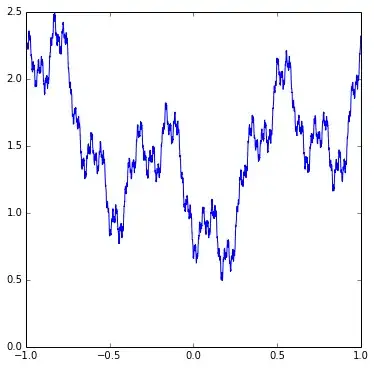I am interested in a modified version of the Takagi function. Particularly, I am interested in showing that it is not differentiable at non dyadic triadic points.
Previously I proved (for the Takagi function $g$ where in the notation I denote the $s$ on Wikipedia by $h$) that $g'(x)$ does not exist where
$$ g(x) = \sum_{n=0}^\infty {1\over 2^n }h(2^n x) = \sum_{n \ge 0}h_n(x)$$
and $h_n(x) = (1/2)^n h(2^n x)$ and $h(x)=|x|$ on $[-1,1]$ and extend it to $\mathbb R$ by defining $h(2+x) = h(x)$. ($h_n$ is a sawtooth function)
It is not difficult: If $x$ is not dyadic it is possible to show that $g'(x)$ does not exist by showing
(i) that $|g_m' (x) - g_{m+1}'(x)|=1$ and
(ii) that $$ {g(y_m) - g(x) \over y_m - x} < g'_m (x) < {g(x_m) - g(x) \over x_m - x}$$
Here $g_m$ denotes the finite sum $\sum_{n=1}^m h_n(x)$.
Now consider the modifed Takagi function: $$g(x) = \sum_{n=0}^\infty {1\over 2^n }h(\color{red}{3}^n x) $$
Again I want to show that $g'(x)$ does not exist if $x$ is not dyadic. It is easy to see that $|g_m' (x) - g_{m+1}'(x)|={3^{m+1} \over 2^{m+1}}$ therefore $g_m'(x)$ is not a Cauchy sequence and does not converge.
I am having trouble showing
$$ {g(y_m) - g(x) \over y_m - x} < g'_m (x) < {g(x_m) - g(x) \over x_m - x}$$
for this modified $g$ because $h_n$ is not $0$ if $n$ is large enough. Nonetheless $g_m$ is still piecewise linear and linear on $[x_m,y_m]$ so that
$$ g'_m (x) = {g_m(y_m) - g_m (x) \over y_m - x} > {g_m(y_m) - g (x) \over y_m - x} $$
What to do about $g_m (y_m)$?
